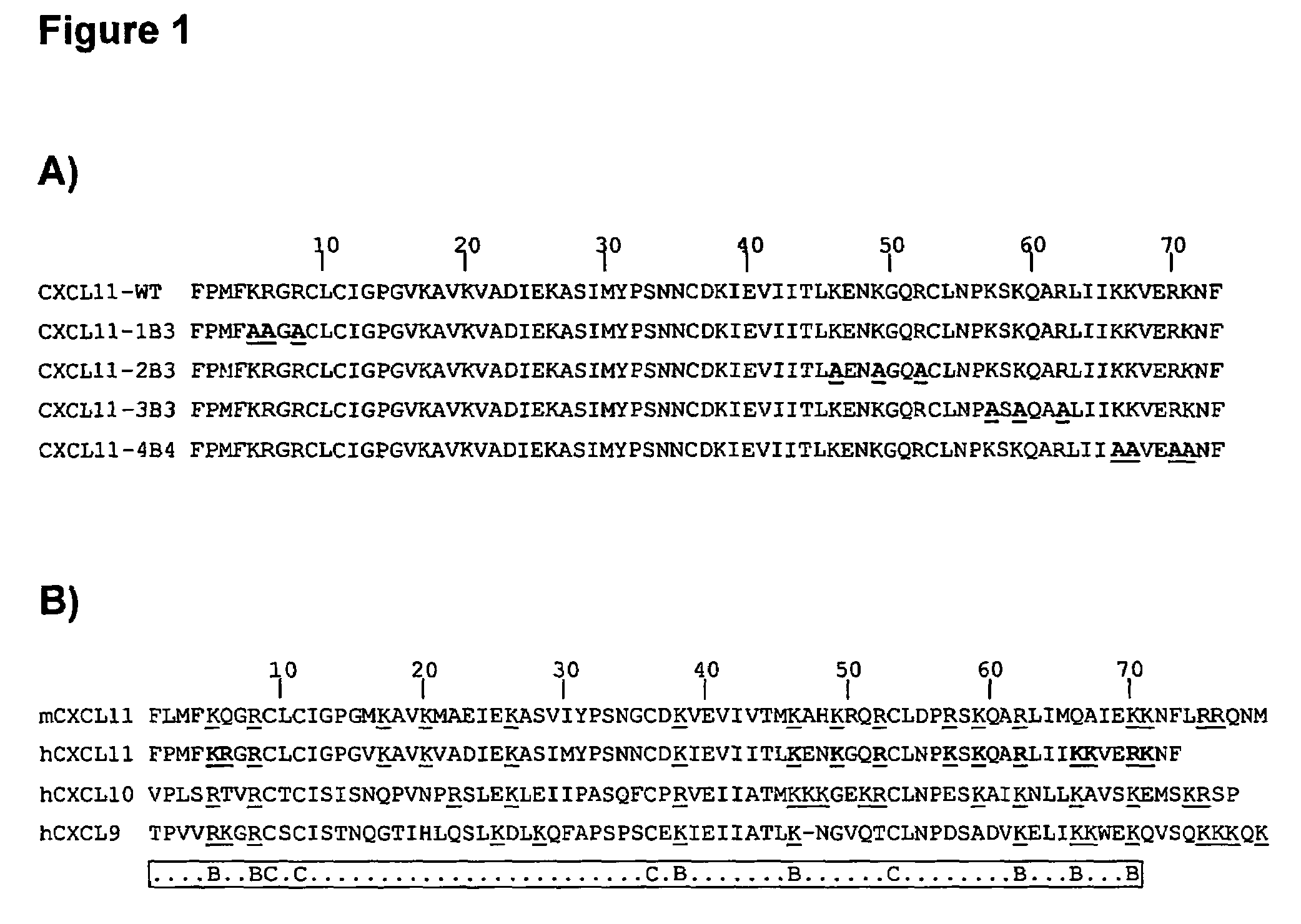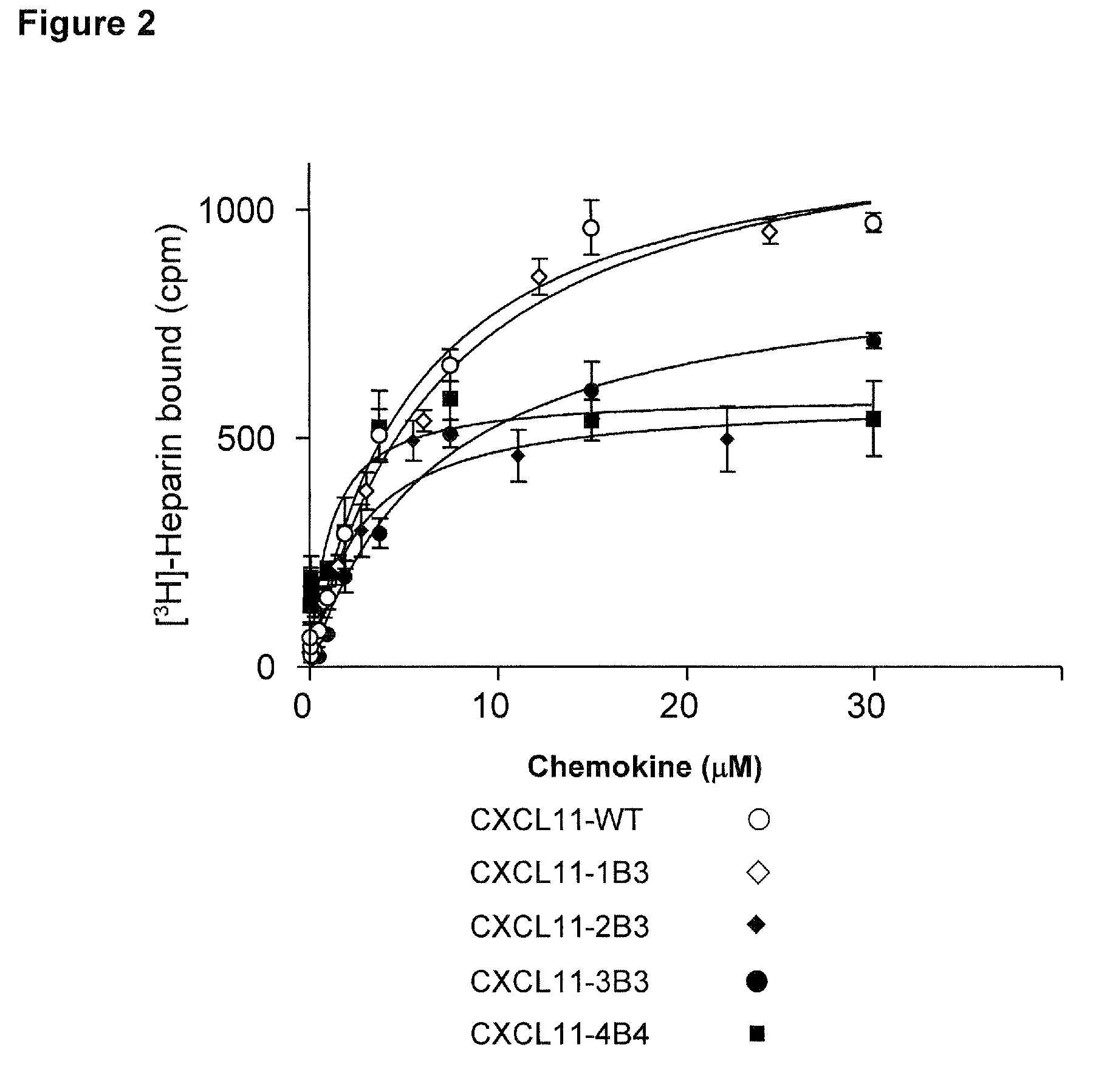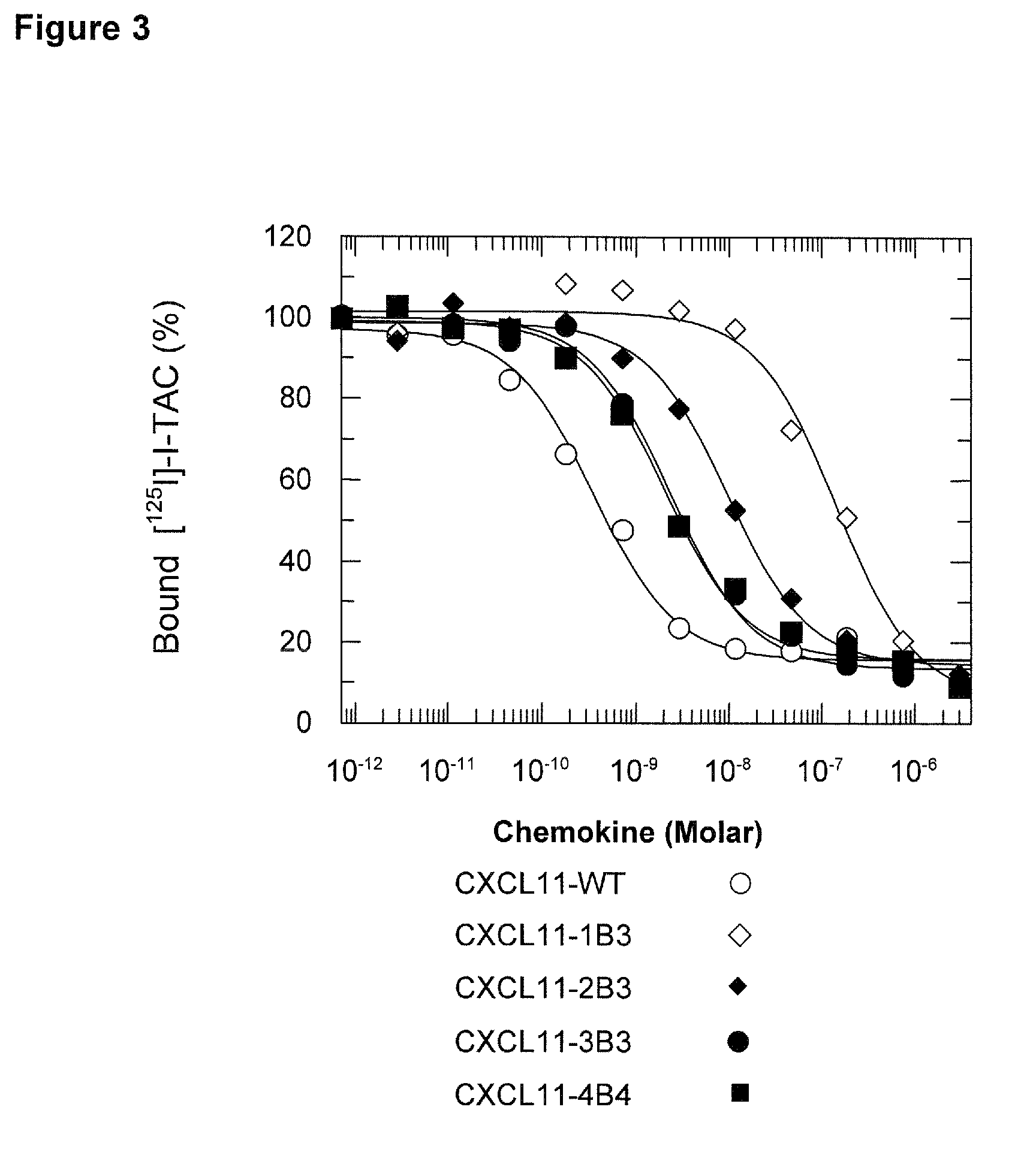Antagonists of cxcr3-binding cxc chemokines
a technology of cxcr3 and chemokine, which is applied in the direction of dna/rna fragmentation, peptide/protein ingredients, depsipeptides, etc., can solve the problems of not being able to apply these approaches to generate and study gag-binding defective cxcl9, cxcl10, or cxcl11. , to achieve the effect of reducing the tendency to intera
- Summary
- Abstract
- Description
- Claims
- Application Information
AI Technical Summary
Benefits of technology
Problems solved by technology
Method used
Image
Examples
example 1
In Vitro Characterization of the Heparin Binding Properties of CXCL11 Mutants
Materials and Methods
Expression of the Human CXCL11 Mutants.
[0099]Human CXCL11 mutants were generated by in vitro PCR mutagenesis of the DNA sequence coding for human CXCL11 (I-TAC; SWISSPROT Acc. No 014625), and in particular for the mature form, corresponding to the segment 22-94 of the precursor molecule, containing 73 amino acids (CXCL11-WT; FIG. 1; SEQ ID NO: 1).
[0100]The clusters of point mutations associated to each mutein (CXCL11-1B3, SEQ ID NO: 2; CXCL11-2B3, SEQ ID NO: 3; CXCL11-3B3, SEQ ID NO: 4; CXCL11-4B4, SEQ ID NO: 5; FIG. 1A) were introduced in the coding sequence of CXCL11-WT by using one or two PCR steps of 25 cycles (proof-reading Pwo DNA polymerase; Boehringer-Mannheim). The template was a plasmid based on the commercial vector pET-24d (Novagen), in which the sequence of mature human CXCL11 is expressed as a fusion protein having a amino-terminal tag (MKKKWP) followed by a Caspase 8 clea...
example 2
Cell-based Assay for the Characterization of a Heparin-binding Defective CXCL11 Muteins.
Materials and Methods
[0116]The assay was carried out using pre-B lymphoma cell line (L1.2 cells), transfected with a plasmid allowing the expression of CXCR3 in these cells, and 96-well microplates (ChemoTX system, Neuroprobe).
[0117]CXCR3-expressing L1.2 cells (see the description above) were cultured in RPMI-1640 medium containing 5% inactivated fetal calf serum (FCS), L-glutamine, 25 mM HEPES, 0.05 mM B-Mercaptoethanol and 0.8 mg / ml Geneticin G-418. The day before the assay, 5 mM n-Butyric acid was added to the culture medium. The cells were collected by centrifugation at 600×g at room temperature and resuspended at a concentration of 1×106 / ml in RPMI 1640 medium containing 5% inactivated FCS without phenol red. The receptor expression was checked by FACS analysis using an anti-CXCR3 antibody labeled with an FITC fluorophore, as described before.
[0118]The recombinant CXCL11 mute...
example 3
Animal-based Assay for the Characterization of a Heparin-binding Defective CXCL11 Muteins.
Materials and Methods
Peritoneal Cellular Recruitment
[0120]Female Balb / C mice of 8 to 12 weeks of age were sensitised on day 0. All mice received 5 sub-cutaneous injections (4×50 μl into each limb and 1×100 μl into the scruff of the neck) of 10 nM CPG-ODN (Microsynth) mixed with 100 μg Ovalbumin (Sigma, Grade V) in sterile PBS. After a week, cellular recruitment was induced into the Balb / C mice by intraperitoneal injection of 10 μg (0.5 mg / Kg) of recombinant CXCL11 protein diluted in 0.2 ml sterile, lipopolysaccharide-free saline (0.9%). When the properties of CXCL11 mutants were tested, the indicated amounts of the protein, diluted in 0.2 ml of the same sterile solution, were administered 30 minutes prior to the agonist administration. Mice were sacrificed by aerosolized CO2 4 hours later, and peritoneal lavage was performed with 5 ml PBS three times. The lavages were pooled and centrifuged at ...
PUM
| Property | Measurement | Unit |
|---|---|---|
| concentration | aaaaa | aaaaa |
| pH | aaaaa | aaaaa |
| pH | aaaaa | aaaaa |
Abstract
Description
Claims
Application Information
 Login to View More
Login to View More - R&D
- Intellectual Property
- Life Sciences
- Materials
- Tech Scout
- Unparalleled Data Quality
- Higher Quality Content
- 60% Fewer Hallucinations
Browse by: Latest US Patents, China's latest patents, Technical Efficacy Thesaurus, Application Domain, Technology Topic, Popular Technical Reports.
© 2025 PatSnap. All rights reserved.Legal|Privacy policy|Modern Slavery Act Transparency Statement|Sitemap|About US| Contact US: help@patsnap.com



